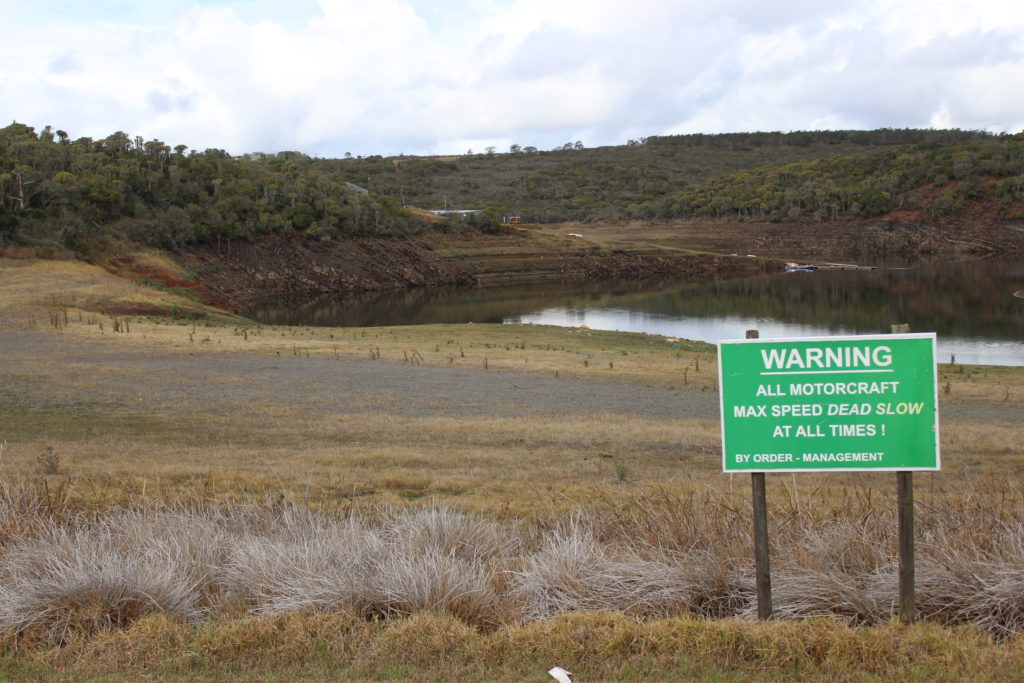Compiled by Nikki Köhly FOR THE MAKANA ENVIRONEWS TEAM
WELCOME BACK, STUDENTS!
Grahamstown is a water-scarce town and while we welcome students back, we also ask them to look after this precious resource as carefully as other residents.
Students and residents can find useful tips and practical information about green living and action for sustainability, at www.ru.ac.za/environment/action and www.ru.ac.za/environment/students
The Eastern Cape, particularly the Sarah Baartman region which Makana falls under, is in a severe drought. For tips on saving water, students and other residents can go to www.ru.ac.za/environment/resources/water
Makana water restrictions
The restriction of 100 litres per person per day still applies. Makana Communications Officer, Ms Yoliswa Ramokolo, confirmed on 25 January that all the restrictions are still standing. “The challenge is community members not adhering to [the restrictions]. Also as the municipality we do not have peace officers for monitoring, we solely depend on the honesty of the citizens,” she said.
Makana Municipality officially declared a state of disaster in May last year, due to dwindling dam levels. At that stage, Settler’s dam was at 29%.
Ramokolo confirmed recently that Settlers Dam (our main supply) is now at 19% – CRITICALLY LOW. Our smaller dams – Howison’s Poort 94%, Botha’s Hill 80% – do not provide sufficient water security. She urges every member of the community to please play your part, use water wisely.
Rhodes University provides water-saving tips and information at www.ru.ac.za/environment/resources/water
Got no water? Desperate to wash?
Don’t worry, help is at hand. Retired academic and innovative inventor, Dr Richard Grant, has revised and improved his simple solution for those in need:
Shower in a Bottle!
Here is a shower you can make in a few minutes. It uses just five litres of water and works really well. If you catch the water in a basin, you can flush your loo with it as well. This is what you need.

|
In addition, you will need some cord so you can make the bottle hang upside down.
Drill some holes in the lid like this.

|
Push the wire into the soft plastic tube and push the plastic tube through the 7 mm hole in the lid so the tube goes to the other end of the bottle when the lid is on. The purpose of the wire is to hold the plastic tube straight inside the bottle. The plastic tube should be a snug fit in the hole. Bend the wire where the tube comes out of the lid so the other end of the plastic tube sticks out to one side.
Fold the free end of the plastic tube over and clamp it with the clothes peg. Fill the bottle with warm water, screw the lid on and hang the bottle upside down just above head height. Try not to squeeze the bottle while you are hanging it upside down!

|
When you are ready, start the shower by removing the clothes peg. If the water doesn’t flow straight away or siphons out of the plastic tube instead of coming through the holes in the lid, it is because the plastic tube in the bottle has water in it. Blow gently into the open end of the tube to expel the water from it and the shower will start.

The shower will run for about 90 seconds with 1.5 mm holes in the cap. If the shower is made with about 25 1.0 mm holes, it runs for just over two minutes. Take about 20 seconds to wet yourself and then turn the shower off by clamping the plastic tube again with the clothes peg. Count the seconds, “One thousand and one, one thousand and two…”

Now apply the soap and then turn the shower on again by removing the clothes peg. Rinse off the soap and enjoy a nice hot shower until the water is finished.
You can save electricity too if you use the sun to heat the water. Do it like this.

Careful! The water gets really hot. When you are ready to have your shower, shake the bottle a few times to mix the water and if it is still too hot, pour a bit out and add some cold.
It is really satisfying to have a good shower that uses just 5 litres of water and no electricity.
Place a hook in the ceiling of your shower cubicle at home to hang this shower from, then if the Municipal water or electricity supply goes off, you can still have a nice hot shower with water from your rainwater tank – and it will be free.
Concept and images by Richard Grant, who before he retired, lectured in the Department of Physics and Electronics at Rhodes University.
Notes.
Making these showers would be a great school project!
There is some interesting physics and chemistry involved too. Some questions one could ask include the following.
- Why doesn’t the water come out when the bottle is upside down and the plastic tube is clamped, even though there are holes in the lid?
- Why do bottles with flattish sides tend to cave in?
- Why are bottles with a round cross-section better able to withstand the slight negative pressure?
- Why does painting the bottles matt black make them heat up in the sun?
- Why do the bottles get so much hotter if you put them in clear plastic bags?
- Why does it take more water to rinse the soap off if you shower with rain water rather than with tap/borehole water?
Find us Online: www.grocotts.co.za/category/outside/enviro-news
Contacts for Makana Enviro-News:
Nikki Köhly: n.kohly@ru.ac.za, 046 603 7205 | Tim Bull: timothybull05@aol.com, 076 289 5122 | Jenny Gon: j-gon@intekom.co.za, 046 622 5822 | Nick James: nickjames@intekom.co.za, 082 575 9781 | Philip Machanick: p.machanick@ru.ac.za, 046 603 8635.



